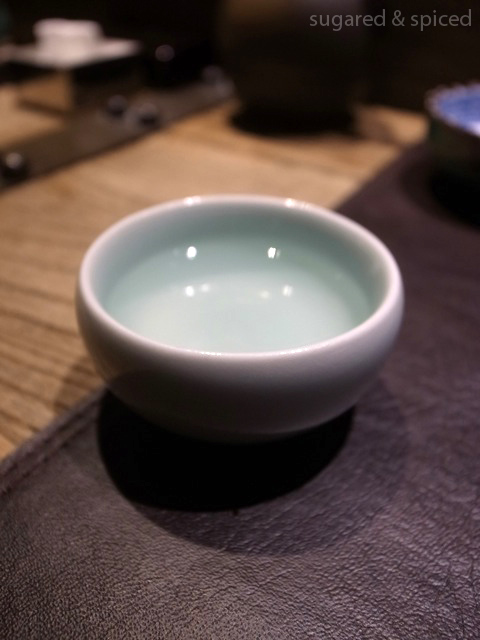Maison Asano 淺野府
Add: 318-2 Julu Lu, near Maoming Nan Lu / 巨鹿路318-2, 近茂名南路
Tel: 6216 2019
Hours: [Tue-Sun] 5:30-10:30pm
Price: 880~1380 RMB/set
Visited: Jan 2015
A number of high-end Japanese restaurants have opened since I left Shanghai in 2012, and one that I heard quite a lot about immediately after its opening is Maison Asano 淺野府. The owners are a pair of Taiwanese siblings with 1/4 Japanese blood from their grandmother, who claims ties to the Asano clan feudal lords (and hence the name Maison Asano). The prices are up there – 888 RMB or 1380 RMB per kaiseki set, but that’s apparently the norm for high end Japanese restaurants nowadays in Shanghai. We were originally planning to go to my old favorite Sushi Oyama, but as it’s closed on Sundays, we ended up at Maison Asano instead.
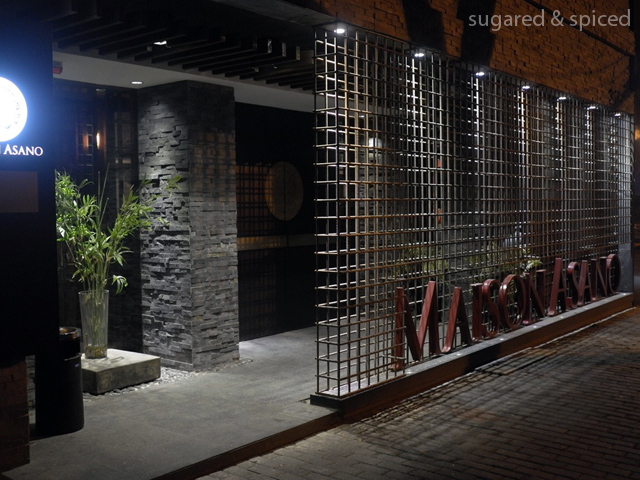
I was expecting an intimate restaurant – perhaps just a bar with one or two tables – but Maison Asano is actually quite big with plenty of tables and a few private rooms.
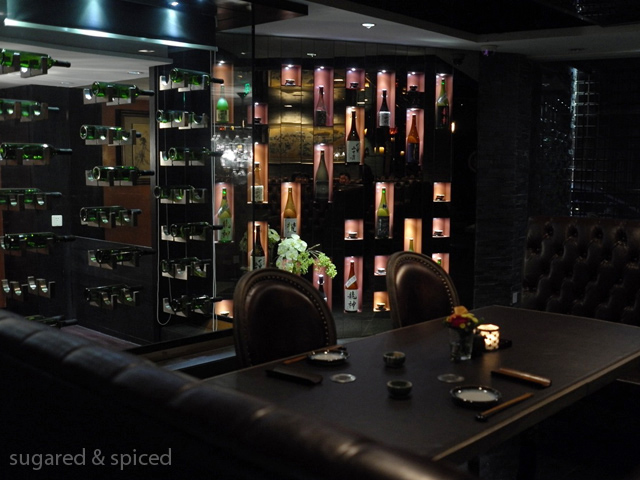
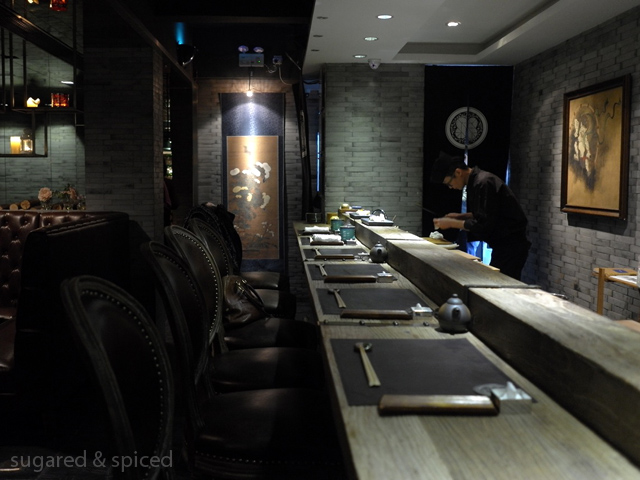
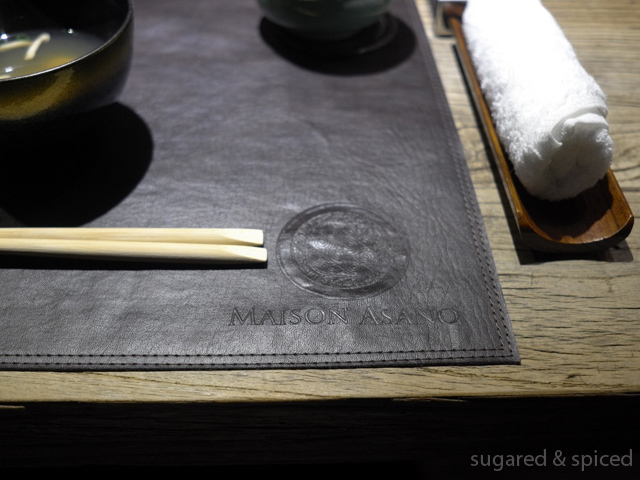
We settled down at the bar and were greeted by Liam, a Taiwanese chef in his early thirties. If you know a little bit about the dining scene in Taiwan, you know that the Taiwanese take Japanese cuisine very seriously, and I don’t doubt their capabilities of making good Japanese food. Having said that, I’m used to being served by Japanese chefs here in Shanghai – which naturally sounds and feels more authentic – and was curious to find out what Liam has got in his sleeves. We ended up having a great time as Liam is a chef proud of what he does and generous in sharing his knowledge – whatever questions we asked he was patient to answer, and I learned a lot more than I expected about how to handle monk fish liver and octopus…
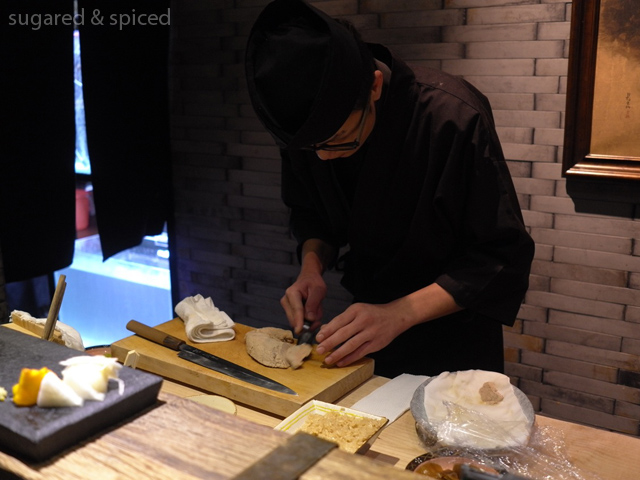
First came a plate of appetizers: jaw of striped jack, sesame tofu, wagyu croquette, Taiwanese mullet roe, and Hokkaido spicy cod roe. Even something as simple-looking as the sesame tofu takes a while to prepare: white sesames are first soaked over night, churned into paste and filtered, heated and mixed with arrowroot starch for one hour, let cooled in a mold, then cubed and roasted before being served. Whew.
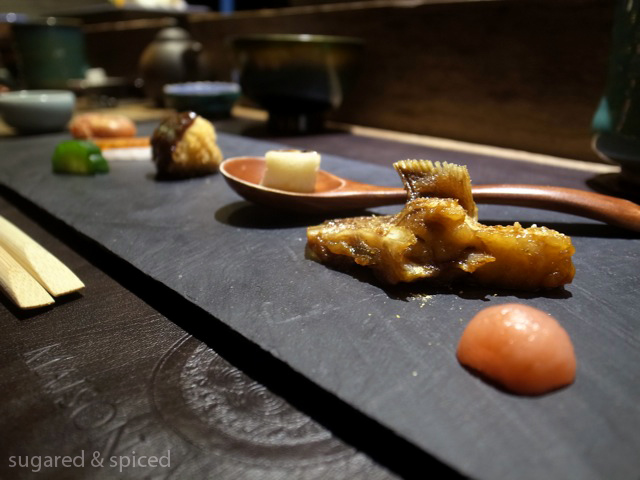
After the appetizers came the sashimi, starting with 真鯛 red seabream.
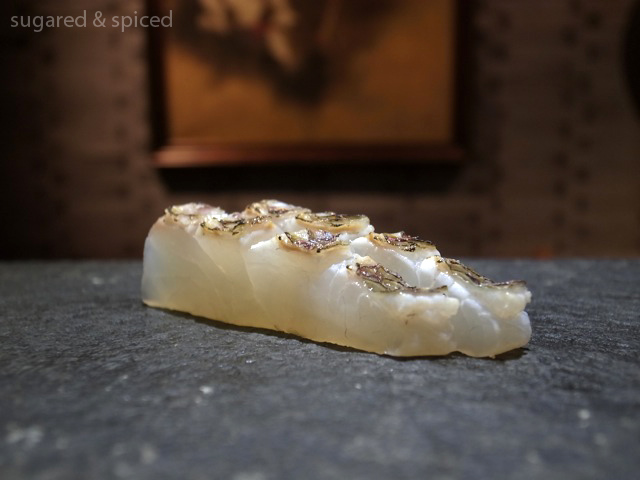
金目鯛 golden eye seabream.
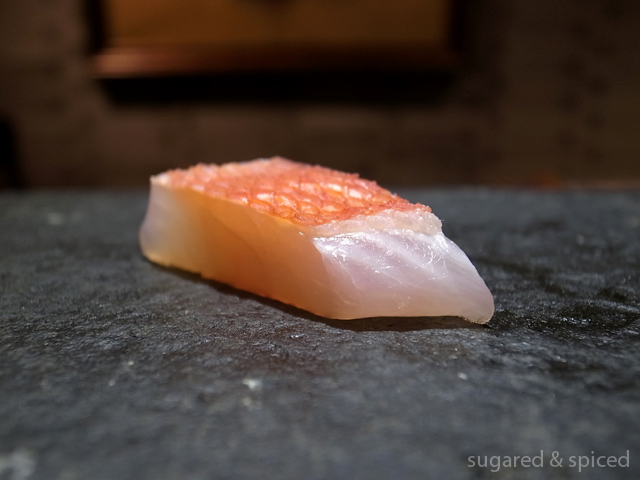
馬貝, some kind of clam whose English name I somehow can’t find on the internet…
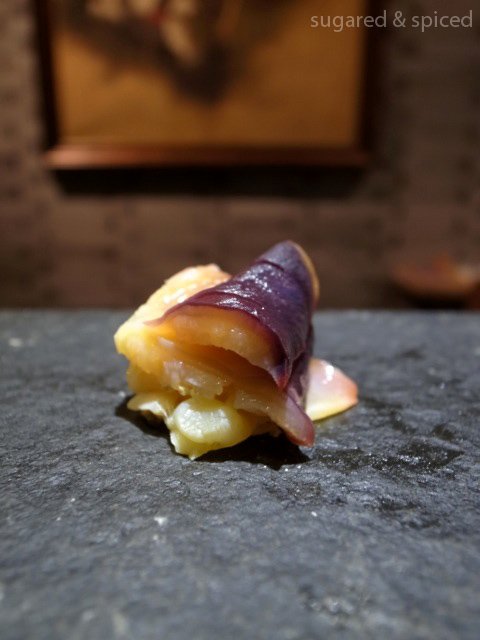
牡丹海老 botan shrimp.
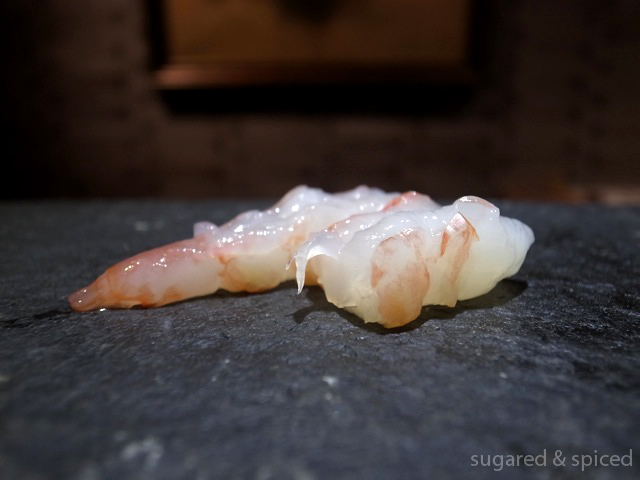
青花 mackerel. I’ve always really liked marinated mackerel, and tonight I finally found out how it’s properly prepared: the fish is first marinated in sugar, salt, and vinegar for two hours, then stored over night for the flavors to mature.
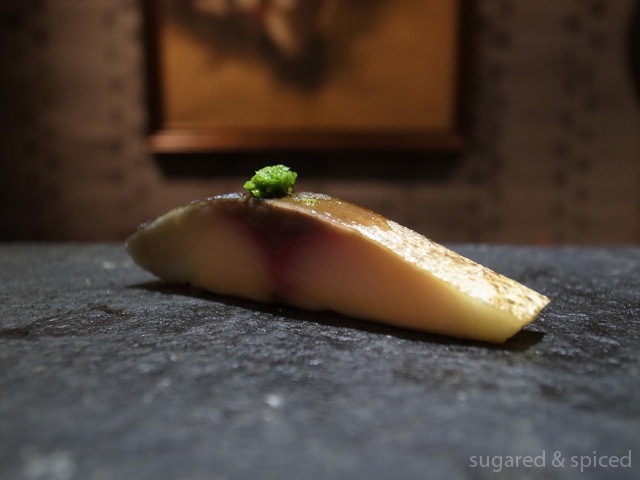
熊本大トロ fatty tuna belly from Kumamoto.
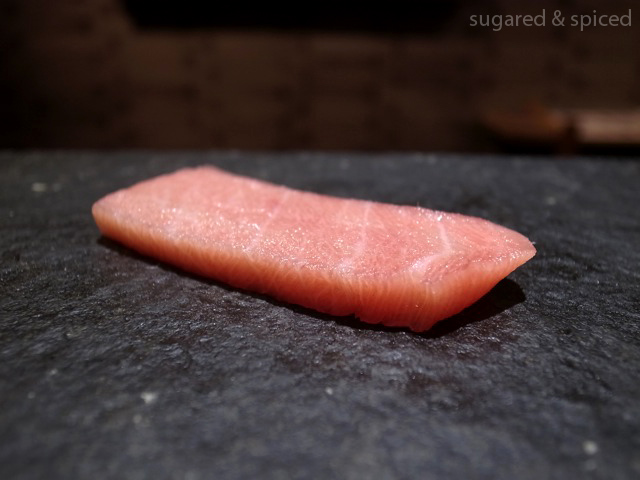
長崎イカ squid from Nagasaki.
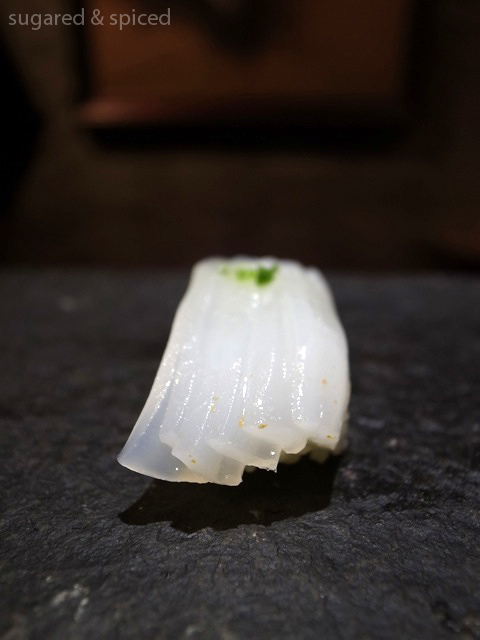
縞鰺, striped jack from Kyushu.
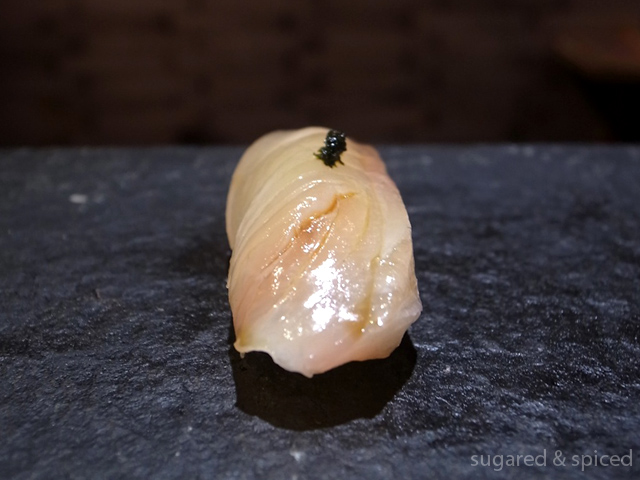
Hokkaido octopus. Here’s Liam’s way (I think he said the Tokyo way) of handling octopus: first it needs to be massaged with salt and turnip puree until soft, then cook with black tea and red beans to achieve the right texture. There are also chefs who simply cook the octopus in salt water until it’s soft – just different regional style, I suppose.
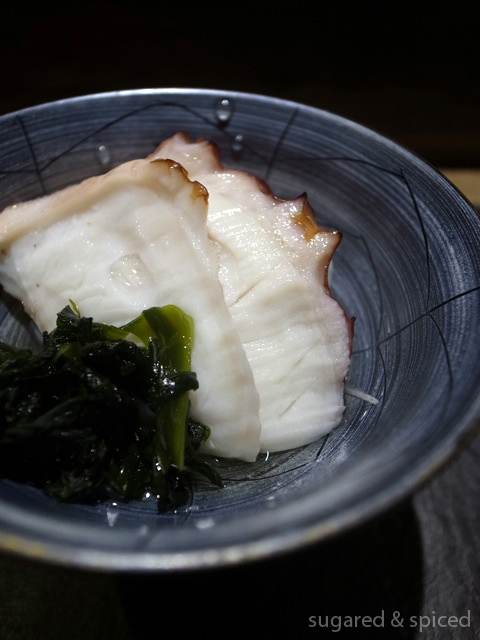
長崎みずうに mizu-uni (sea urchin) from Nagasaki.
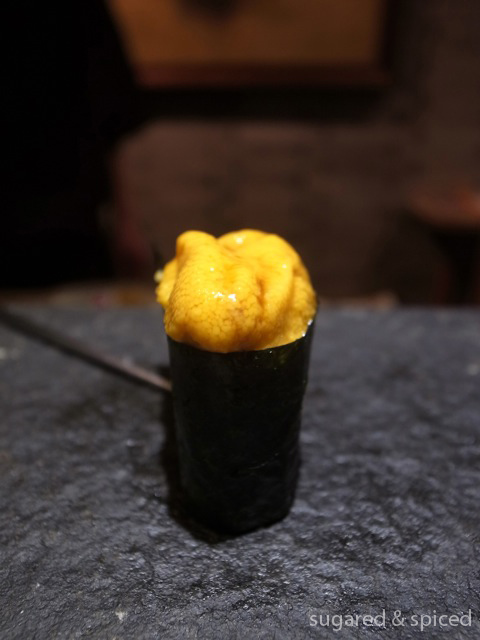
Next came something I’ve never tasted before – 西瓜の奈良漬, or pickled watermelon Narazuke-style (it’s that yellow piece on top), with monkfish liver. The liver has been soaked in a mixture of bonito stock, soy sauce, mirin, Japanese wine, turnip, and kombu in low temperature until it’s cooked through, and left mature in flavor till the stock cools down. The combination of this with pickled watermelon was quite something.
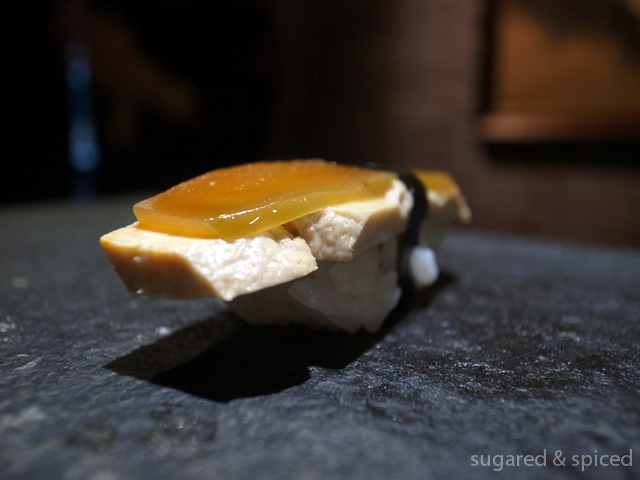
和牛 wagyu.
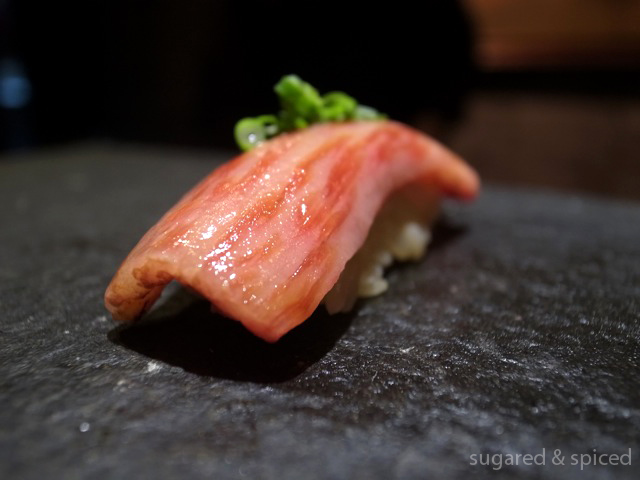
熊本蛇腹, the center-most part of fatty tuna belly from Kumamoto. It was my first time trying this part of the tuna belly, and while I loved the fattiness of it, I didn’t quite like the tendons.
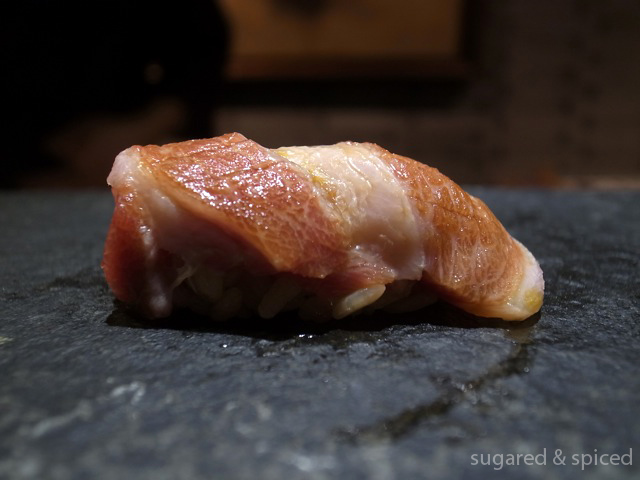
Liam also served us a couple of side dishes to go with the sake, including fried skin of 鰤魚 buri yellowtail from Nagasaki, sea snail from North Korea, and lightly fried ワカサギ wakasagi from Hokkaido.
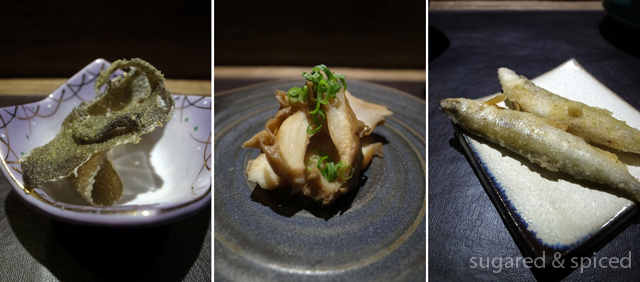
Wagyu with chopped mountain yam and cherry tomato poached in red wine.
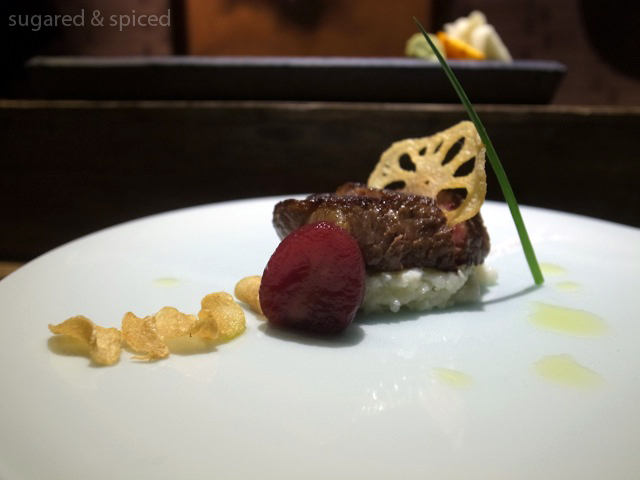
Oyster in ponzu sauce.

The meal culminated with a monk fish hot pot.

Dessert was green tea with red beans, a classic combination in Japanese sweets. The green tea part was half panna cotta half mousse, and the red beans were first steamed then cooked for the perfect texture.
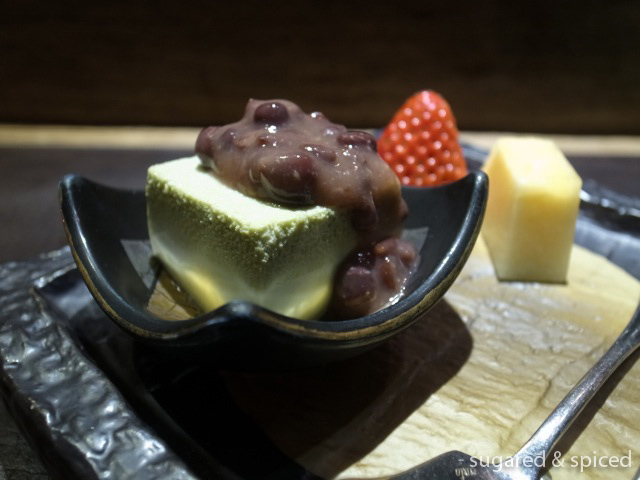
Liam is someone with strong principles regarding how to prepare and serve his food, and it’s not always easy to uphold these in Shanghai. He explains that it’s very frustrating to communicate with customers who come in saying – “I don’t eat anything raw, can you torch everything for me?”, or who gets mad at him because “Fried fish skin is not decent food, I can’t believe you are serving me this!” Call him persistent or stubborn, but for now he’s sticking to his way of doing things. Good luck and keep strong.
